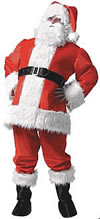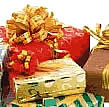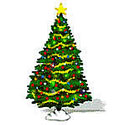 St Mary's Church, Dymock
St Mary's Church, Dymock
| Admin | |||
| . | Home | Contents | |
| H&S Policy | People Safety | Grave Yard | |
The Church & The World
Faith & Care
Faith & Care
Things Past
People & Features
People & Features
Seasons and Festivals

As well as the Seasons and Major Festivals, the church celebrates several 'Special Days' throughout the year to remember, honour or support our work in God's world. Celebration of the Special Days is usually optional, Christians chose which they want to include. Click here to view the 'Special Days'.

.
Santa Claus was named after the 4th century Greek bishop Saint Nicholas, the patron saint of children, who was reported to secretly give free gifts to the poor, especially children, and whose activites came to be celebrated as part of the Roman Catholic practice of venerating (honouring) individual saints on a particular day. The Protestant reformer Martin Luther moved the tradition of giving gifts for Saint Nicholas on his special day in early December to Christmas to help children focus more on Jesus Christ rather than on the saints.
.
Father Christmas arose around around sixteen hundreds as a man who celebrates the merriness of Christmas in defiance of the Puritans after the English civil war. The Puritans were a religious group who banned the celebration of Christmas because they saw it as pampering to non-Christian ideas, and Father Christmas was a reaction to their dullness.. He traditionally brings presents to good children at Christmas, which he carries in a large sack, travelling through the sky on a sleigh pulled by reindeer and coming down the chimney to deliver them into stockings or sacks left out for that purpose. (This tradition gets difficult to explain to children in modern houses with no chimney)!
Christmas Presents


Again at the time of the English civil war, Christmas Trees were banned (by the Putitans) as a 'heathen tradition' detracting from the Word of God, but most churches now have a Christmas Tree, either inside or outside the building. Some even have a 'Christmas Tree Festival' with many trees and a range of decorations, often collecting money for viewing them, which is then given to charity.
Christmas Cards

Christmas Crackers

Christmas Dinner
